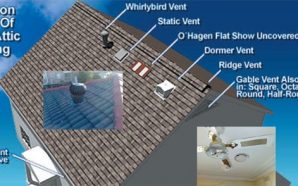Heat recovery is a ventilation system for the entire house that will both supply and extract air. Studies have suggested that it can recover up to 95 percent of heat which otherwise could have been lost through your standard home ventilation process. With a heat recovery unit centrally located in a loft or cupboard, each of your rooms gets connected through a network of ducts, wall or ceiling grilles.
How Do They Work?
HRVs comprise of two ventilation ducts that run next to each other. One duct brings in fresh air while the other one carries out the moist and stale air. The clever aspect of it all is that the two different air streams go through a special device known as a heat exchanger which allows the air heading out to pass much of its heat into the air that is getting in without the two streams of air really mixing together.
Heat Recovery Ventilation is appropriate for a newly built home. Your choice of a heat recovery unit ought to be based on a computation of your floor area and house occupancy levels.
A HRV is perfect if your home is located in areas that experience colder climates because they experience excessive heating during the heating season. The HRV unit gets rid of this excess heat. The upshot is that you receive a continuous fresh air supply, without experiencing any unpleasant drafts plus increased comfort within the home.
Benefits
There are quite a number of mechanical ventilation methods that you can choose from. However, heat recovery ventilation is one of the best. It has a host of advantages including cost-effectiveness and as its name suggests energy recovery. Here are those benefits explained.
In a paper whose aim was to investigate the impact of HRVs on energy use published in 2003 on Management of Environmental Quality: An International Journal (Vol. 24), it was shown that the HRV system could lead to 74% energy savings. The paper concluded that using this system is fairly cost-effective and a worthy home investment.
Cost Effective
The system includes two vents of air that run parallel to each other. In the two tubes, the air flows counter to each other. One of the tubes lets in fresh air while the other is a passage for the stale. The exhaled air tends to be warmer. The system takes advantage of this and the heat from the outgoing air is transferred to the incoming air, which is warmed before being released for circulation in the room. This principle gives the system its name – Heat Recovery Ventilator.
This system is cost-effective because it saves you the money you would need to heat up your home when it gets cold. You also save up on electricity bills. You pay for one system that gives you all you need. Your home is ventilated and heated at the same time.
Air Changing
Having this system in your washroom eliminates the need for you to get an air freshener. It is set according to the Building Code of Australia standards to have an air change rate (ACH or ac/hr.) of at least 4 per hour. Though up to 10 changes per hour is acceptable.









